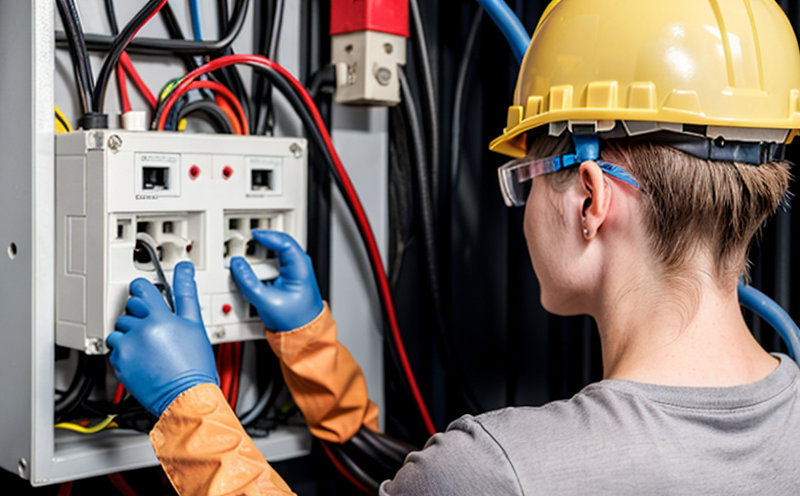UL 2108 Low Voltage Smart Lighting Safety Testing
The UL 2108 standard is a critical benchmark in the United States and Canada for ensuring that low voltage lighting devices are safe, reliable, and compliant with regulatory requirements. This service focuses on the rigorous testing of smart lighting systems to ensure they meet all relevant safety standards. For quality managers and compliance officers within the smart home sector, this service is essential for validating product safety before bringing a new product to market.
UL 2108 addresses potential hazards such as electrical shock, fire risk, and other safety concerns that can arise from improper design or manufacturing practices in low voltage lighting products. Compliance with UL 2108 ensures that smart lighting systems are safe for use in residential settings, where they may interact closely with occupants.
The testing process involves a series of procedures designed to evaluate the electrical safety and performance characteristics of the product. This includes assessing insulation resistance, power factor correction, and ensuring proper operation under normal usage conditions. Smart lighting devices that pass these tests are deemed safe for use in residential environments and can be sold with confidence.
For R&D engineers, this service provides a critical benchmark against which new products can be validated. It ensures that innovations like Wi-Fi enabled dimmers or motion-activated LED strips meet the same high standards as traditional lighting fixtures. Compliance officers will find this service invaluable for ensuring their supply chain partners adhere to strict safety protocols.
UL 2108 testing is particularly important because it covers not just the physical construction of the light fixture, but also its electronic components and overall system design. The standard takes into account both static and dynamic aspects of smart lighting systems, making sure that they function safely under all expected conditions.
- Insulation Resistance: Ensuring there is sufficient insulation between live parts and accessible surfaces to prevent electric shock.
- Power Factor Correction: Making sure the device operates efficiently without causing excessive power losses or generating electromagnetic interference.
- Operational Stability: Verifying that the lighting system remains stable under varying load conditions, temperature changes, and voltage fluctuations.
By adhering to these rigorous testing protocols, manufacturers can ensure their smart lighting products are not only innovative but also safe for widespread use. This service helps companies navigate complex regulatory landscapes, ensuring compliance with both local and international standards.
Applied Standards
The UL 2108 standard incorporates various elements of electrical safety that are crucial for low voltage smart lighting devices. It draws from multiple sources including ANSI/UL (American National Standards Institute), IEC, and EN regulations to provide a comprehensive set of guidelines.
- ANSI/UL 2108: The primary standard used in the United States and Canada for low voltage lighting devices. It covers everything from basic electrical safety requirements to more advanced considerations like power factor correction.
- IEC 61950: International Electrotechnical Commission standard that sets out general requirements for indoor low voltage luminaires, including those used in smart home applications.
- EN 62478: European standard which provides detailed specifications on the performance and safety of LED lighting products. This is particularly relevant for manufacturers with a focus on European markets.
The integration of these standards ensures that UL 2108 testing is both comprehensive and internationally recognized, providing peace of mind to manufacturers and consumers alike. By adhering to this standard, smart lighting manufacturers can ensure their products meet the highest levels of safety and reliability.
Scope and Methodology
The scope of UL 2108 Low Voltage Smart Lighting Safety Testing encompasses a wide range of parameters that must be evaluated to ensure compliance with all relevant standards. This includes not only basic electrical safety but also advanced features like power factor correction, which is particularly important in modern smart lighting systems.
The methodology involves several key steps:
- Initial Inspection: A thorough examination of the product's design and components to ensure they meet the requirements set forth by UL 2108. This includes checking for proper insulation, correct wiring, and adherence to all safety guidelines.
- Insulation Resistance Testing: Measuring the resistance between live parts and accessible surfaces using specialized equipment. This step ensures that there is sufficient protection against electrical shock.
- Power Factor Correction Evaluation: Assessing how efficiently the device converts AC power to DC, ensuring minimal waste and interference with other electronic devices.
- Operational Stability Testing: Simulating real-world conditions to verify that the lighting system remains stable under varying loads, temperatures, and voltage fluctuations. This ensures consistent performance across different environments.
- Certification and Reporting: Upon successful completion of all tests, a comprehensive report is generated detailing each test result. This report serves as proof of compliance with UL 2108 standards and can be used during regulatory reviews or for marketing purposes.
This meticulous approach ensures that every aspect of the smart lighting system is thoroughly evaluated, providing manufacturers with confidence in their product's safety and reliability.
Quality and Reliability Assurance
- In-Process Monitoring: Continuous monitoring during manufacturing to ensure adherence to strict quality control measures. This includes real-time checks on component integrity and assembly processes.
- Post-Market Surveillance: Ongoing collection of data from deployed products to identify any emerging issues or trends that could impact safety or reliability.
- User Feedback Integration: Incorporating feedback directly into the design process to address user concerns and improve product performance continuously.
A commitment to quality does not end with certification. Our laboratory actively participates in post-market surveillance programs, ensuring ongoing compliance even after products have been released into the market. By leveraging real-world data from deployed devices, we can identify potential risks early on and take corrective actions promptly.
Our approach goes beyond mere certification; it involves a proactive stance towards quality assurance that prioritizes user safety above all else. This commitment to excellence ensures that our clients' products not only meet but exceed industry standards, providing a higher level of trust for both manufacturers and consumers alike.





